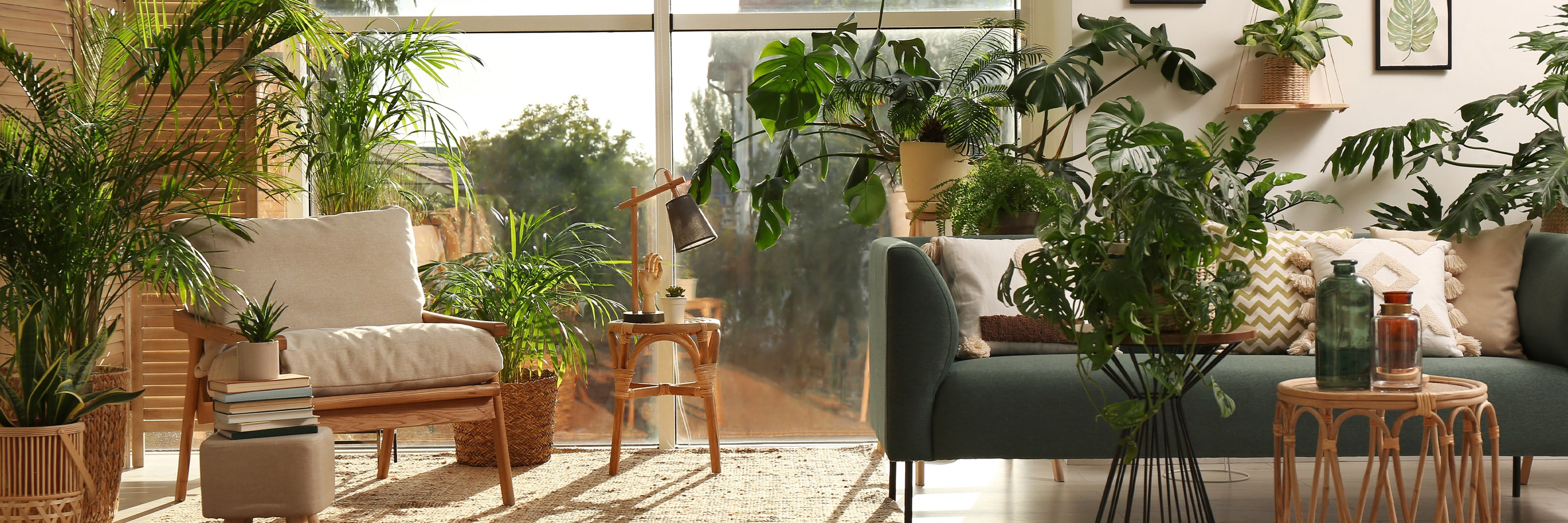
Bringing plants into your home is a fantastic way to add life, color, and natural beauty to your indoor space. They enhance your décor and contribute to a healthier living environment by purifying the air, boosting your mood, and promoting creativity and focus. The key to thriving plants is placing them in the right spot based on how much light they need. This ensures they get the right amount, which is essential for growth and vitality. But how much light is in each area? Since each type of plant has different needs, you'll need to be nuanced in where you display them.


Understanding Light Conditions and Window-Facing Directions
By recognizing the variations in light levels - from low and partial to bright and direct - and knowing the orientation of your windows, you can create an ideal environment for each houseplant.
Low Light Areas
These are areas many feet away from windows or that otherwise receive very little natural light. You'll usually find them in north-facing rooms or spaces with small windows. Ideal plants for these conditions include snake, ZZ, pothos, and cast iron plants; all are hardy, adaptable, and can tolerate low light conditions.
Partial Light Areas
Spots that receive a mix of direct sunlight and shade throughout the day fall under this category, like rooms with east-facing windows that get morning sun and afternoon shade. Plants like spider plants, peace lilies, and philodendrons enjoy a balance of light and shade, making them ideal for these spots.
Indirect Light Areas
These areas receive bright but filtered light, perhaps through windows with sheer curtains or not directly in line with the sun. Rooms they're found in tend to have large windows or an abundance of them. Plants that thrive in bright, indirect light include fiddle leaf figs, rubber plants, orchids, and Boston ferns.
Direct Light Areas
In these locations, light hits the plant for most of the day, such as through south or west-facing windows that receive direct sun. Ideal plants for these spots include succulents, cacti, aloe vera, and jade plants. These sun-lovers need abundant light to flourish, so keep them close to the windows.


Tips for Placing Houseplants in Different Rooms
Placing your plants in the right room can significantly affect their health and appearance. However, note that the layout, window placement, and amount of natural light a space receives can vary from one home to another.
Living Room
This room often has multiple light conditions, so adjust positioning as needed. Place low-light plants in corners and indirect-light plants fairly close to windows. For direct light plants, put them on window sills or right next to them. This way, you create a lush, green, and balanced ambiance throughout the space.
Bedroom
Typically, bedrooms have low to moderate natural light for privacy reasons. Use low-light tolerant plants like snake plants on nightstands or in corners away from windows and spider plants for areas with more light. This greenery adds a calming energy to your personal sanctuary and can improve your quality of sleep.
Kitchen
Light in kitchens can vary widely depending on the amount of windows. Place herbs like basil and mint in bright, indirect light areas to keep them happy and close by for cooking. Aloe vera and succulents can thrive on sun-drenched countertops, adding a fresh element to your kitchen décor.
Bathroom
Bathrooms often have low light and high humidity, with frosted or curtain-covered windows. These conditions are ideal for low-light and humidity-loving plants like pothos, ferns, and cast iron plants. These plants can thrive in the bathroom, providing health benefits and creating a spa-like atmosphere.
Home Office
Light in home offices varies but is often indirect. Choose easy-to-care-for plants like ZZ plants and philodendrons that can adapt to varying light conditions. If applicable, hang trailing plants near windows. These green friends will enhance your workspace, making it a more creative and productive environment.
Choosing the right spot for your houseplants based on light conditions will help them flourish and bring beauty to your space. Remember to rotate your plants occasionally to ensure even growth and adjust their placement as the seasons change. This simple practice can make a big difference in keeping your indoor jungle happy and healthy.



